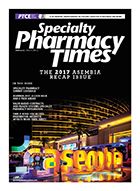Publication
Article
Specialty Pharmacy Times
Specialty Pharmacy: Where Are We Now and Where Are We Headed?
Author(s):
Consolidation and drug costs will play a key role in the future of specialty pharmacy.
The specialty pharmacy industry is flourishing, as a flood of new manufacturers, pharmacies, and health care providers seek to break into the specialty world. During the Specialty Pharmaceuticals and Pharmacy: Today, Tomorrow, and Beyond session at the Asembia Specialty Pharmacy Summit 2017, speaker Adam Fein, PhD, president, Pembroke Consulting, Inc, drew a parallel between the rapid growth of the conference and the boom in the specialty landscape.
Specialty drugs comprise a large amount of prescription drug revenue and that trend is expected to continue as new drugs are approved. Both retail and non-traditional competitors—such as health systems and integrated delivery networks—have expressed interest in selling specialty drugs, Dr Fein noted during the session. Unsurprisingly, a majority of accredited specialty pharmacies are independents, followed by health care providers, and pharmacy benefit managers/health plans, according to Dr Fein.
“Specialty pharmacy is getting a lot more competitive and it is not the usual competitors you’re used to seeing,” Dr Fein said. “It’s nontraditional competitors that often have connections with other partners in the system to position themselves.”
Competition is changing as a result of narrow networks and new participants in the industry, according to Dr Fein. The control of the pharmaceutical supply chain is no longer in the hands of the manufacturer, but now involves prescribers, providers, and payers, he added.
On the business side, there is growing concern about the sustainability of the current supply chain, as the growth of companies such as Walgreens, CVS Health, and Express Scripts are outpacing the market. Investors are concerned over increased price sharing and rising drug costs, as manufacturers are blaming the rest of the supply chain for cost increases, members of the panel said. A major concern is the level of consolidation among specialty pharmacies, payers, pharmacy benefit managers (PBMs), and distributors.
There are 3 distributors with approximately 90% of the market share; 2 pharmacies — if the Rite Aid merger is successful–account for more than 50% of the market; and 75% of the market is owned by 3 PBMs, according to panelist Eric Percher, director, Equity Research, Pharma Supply Chain and HICT, Barclays PLC. As pharma stakeholders fight for greater shares specialty pharmacy revenue, the panel noted that the formation of new alliances creates disruption in the industry and provides an opportunity to reduce systemic waste, while also improving patient care.
Currently, specialty drug spending is being driven by diabetes, oncology, and autoimmune drugs, whereas in previous years, it was dominated by hepatitis C virus drugs. In 2016, spending on adalimumab (Humira) surpassed spending for ledipasvir/sofosbuvir (Harvoni). However, biosimilars for 2 out of the top 3 cost-driving drugs—adalimumab and etanercept (Enbrel)—have been approved, which could lower spending.
As patents expire and more biosimilars are approved, there will likely be a dramatic shift in prescribing habits and spending, leading to changes in current specialty pharmacy trends, members of the panel said. Consolidation, drug costs, and emerging stakeholders will all play a major role in the future of specialty pharmacy, according to the panel.
“I think we’re going to see a shift away from the deep-rebate model. Inevitably, we’re going to have increased price transparency,” said panelist Doug Long, vice president of Industry Relations, QuintilesIMS. “We’re going to see increased management within the medical benefit. If we’re going to look to contain costs and make smarter decisions, we’re going to have to do some more management.” 







